
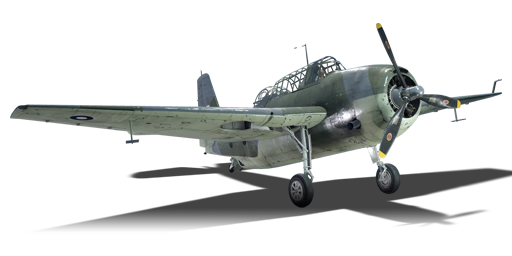
Aviation
▄Avenger Mk II
II
Rank
AB
1.7
RB
1.7
SB
2.0
Battle rating
Great Britain
Research country
Bomber
Main role
1,000

Purchase

Premium vehicle
Status
General information
Flight performance
Max speed
at 3,650 m
432400451415 km/h
Rate of Climb
5.13.37.13.3 m/s
Turn time
3032.32931.1 s
Max altitude
7,100 m
Takeoff Run
306 m
Landing
flaps
flaps
Take-off
flaps
flaps
Combat
flaps
flaps
Air
brake
brake
General characteristics
Crew
4 persons
Engine
Length
12.2 m
Wingspan
16.5 m
Wing Loading
145 kg/m²
Weight:
Base weight
5.695.875.555.84 t
Fuel in main tanks
0.91 t (2h 5m)
Limits:
Max Speed Limit (IAS)
612 km/h
Mach Number Limit
0.63 M
G limit
≈ -3/6 G
Flap Speed Limit (IAS)
285 km/h
Gear Speed Limit (IAS)
397 km/h
Offensive armament
2 × 12.7 mm M2 Browning machine gun
Ammunition
620 rounds
Fire rate
750 shots/min
One-second Burst Mass
0.54 kg
| Belt | Belt filling | Armor penetration (mm) at a distance: | |||||
|---|---|---|---|---|---|---|---|
| 10 m | 100 m | 500 m | 1000 m | 1500 m | 2000 m | ||
| T/Ball/Ball/I/AP-I | 28 | 26 | 18 | 11 | 7 | 4 | |
| AP-I/AP-I/AP-I/T/I | 28 | 26 | 18 | 11 | 7 | 4 | |
| T/AP/AP/AP/AP-I/I | 30 | 27 | 20 | 13 | 9 | 6 | |
| T/T/T/T/T/AP-I | 28 | 26 | 18 | 11 | 7 | 4 | |
| AP/AP-I/AP-I/I/I | 30 | 27 | 20 | 13 | 9 | 6 | |
Defensive armament
Turret — 12.7 mm M2 Browning machine gun
Ammunition
400 rounds
Fire rate
750 shots/min
One-second Burst Mass
0.54 kg
| Belt | Belt filling | Armor penetration (mm) at a distance: | |||||
|---|---|---|---|---|---|---|---|
| 10 m | 100 m | 500 m | 1000 m | 1500 m | 2000 m | ||
| T/AP/I/AP-I | 30 | 27 | 20 | 13 | 9 | 6 | |
| AP/AP/AP/T | 30 | 27 | 20 | 13 | 9 | 6 | |
| AP-I/AP-I/AP-I/T | 28 | 26 | 18 | 11 | 7 | 4 | |
Turret — 7.62 mm Browning machine gun
Ammunition
500 rounds
Fire rate
1,000 shots/min
One-second Burst Mass
0.16 kg
| Belt | Belt filling | Armor penetration (mm) at a distance: | |||||
|---|---|---|---|---|---|---|---|
| 10 m | 100 m | 500 m | 1000 m | 1500 m | 2000 m | ||
| T/Ball/Ball/AP/I | 13 | 12 | 7 | 3 | 2 | 0 | |
| T/AP/AP/AP/I | 13 | 12 | 7 | 3 | 2 | 0 | |
Suspended armament
Max weight
1,000 kg
Wing loading
left / right
Maximum
470 kg
Max. difference
120 kg
| Name | Weight | Slot | ||||||
|---|---|---|---|---|---|---|---|---|
| 4 × | 251.2 kg | 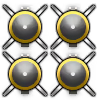 |  | |||||
| 467.2 kg | 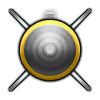 |  | ||||||
| 4 × | 970.4 kg | 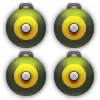 | ||||||
| 996.3 kg | 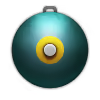 | |||||||
| 2 × | 914.4 kg | 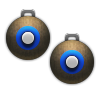 | ||||||
| 721.2 kg | 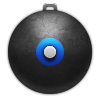 | |||||||
| 884 kg | 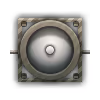 | |||||||
| 964.8 kg |  | |||||||
Economy
Repair cost
AB
546 

RB
2,654 

SB
1,206 

Crew training
4,800 

Experts
32,000 

Aces
250 

Research Aces
440,000 

Reward multiplier
AB / RB / SB
 2 x (75 / 215 / 270) %
2 x (75 / 215 / 270) % 
 2 x 124 %
2 x 124 % 

Premium vehicle
All modifications are unlocked
Flight performance | |
|---|---|
Weaponry | |||
|---|---|---|---|
Rating by players
You must play more than 3 battles for the last week and more than 10 battles in a vehicle to rate it.
Like:
11
Flight performance:
Not enough ratings
Survivability:
Not enough ratings
Aerial combat:
Not enough ratings
Ground attack:
Not enough ratings
Balance:
Not enough ratings
Tips & Tricks
This space is currently empty
Do you know any interesting vehicle features?
Loading...
No articles about this vehicle yet
Become the first author and get rewards!
Write a guide, tell about interesting historical facts, make a tutorial or simply an interesting post.
No more content